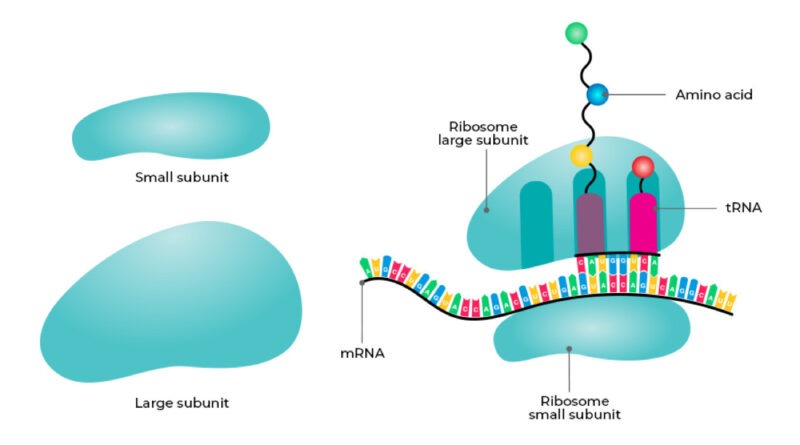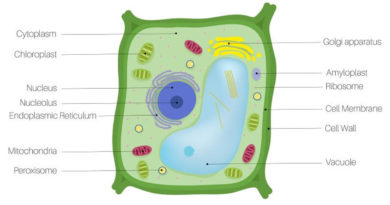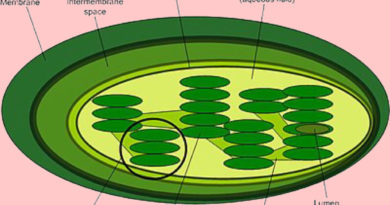Ribosomes in Eukaryotic Cells: The Protein Synthesis Powerhouses
Ribosomes are essential molecular machines found in all living cells, responsible for synthesizing proteins by translating messenger RNA (mRNA) into amino acid sequences. In eukaryotic cells, ribosomes are complex structures that play a critical role in cellular function and regulation. Understanding ribosomes’ structure, function, and the intricate processes they partake in provides insight into the fundamental mechanisms of life.
Structure of Eukaryotic Ribosomes
Eukaryotic ribosomes are larger and more complex than their prokaryotic counterparts. They consist of two subunits: the small 40S subunit and the large 60S subunit, which together form the 80S ribosome (Svedberg units, which measure sedimentation rate during centrifugation, not size). Each subunit is composed of ribosomal RNA (rRNA) and numerous ribosomal proteins.
1. 40S Subunit: This subunit contains one 18S rRNA molecule and about 33 proteins. It is responsible for binding to the mRNA and decoding its sequence.
2. 60S Subunit: The larger subunit comprises three rRNA molecules (28S, 5.8S, and 5S rRNA) and approximately 49 proteins. It is responsible for catalyzing peptide bond formation, the chemical reaction that links amino acids together.
Function of Ribosomes
Ribosomes facilitate the process of translation, wherein the genetic code carried by mRNA is decoded to synthesize proteins. This process involves several key steps:
1. Initiation: The small 40S subunit binds to the mRNA and a special initiator transfer RNA (tRNA) that carries the amino acid methionine. This complex then recruits the large 60S subunit to form a functional ribosome.
2. Elongation: The ribosome moves along the mRNA, reading its nucleotide sequence in sets of three bases (codons). Each codon specifies a particular amino acid, which is brought to the ribosome by tRNA molecules. The ribosome catalyzes the formation of peptide bonds between the amino acids, elongating the protein chain.
3. Termination: When the ribosome encounters a stop codon on the mRNA, translation ends. The newly synthesized protein is released, and the ribosome subunits dissociate, ready to start another round of protein synthesis.
Ribosome Biogenesis
Ribosome biogenesis is a highly regulated, energy-intensive process involving the coordinated action of ribosomal proteins, rRNA, and numerous accessory factors. In eukaryotic cells, this process begins in the nucleolus, a subregion of the nucleus, where rRNA is transcribed, processed, and assembled with ribosomal proteins.
1. rRNA Transcription and Processing: The rRNA genes are transcribed by RNA polymerase I (for 28S, 18S, and 5.8S rRNA) and RNA polymerase III (for 5S rRNA). The precursor rRNAs undergo extensive chemical modifications and cleavage to produce the mature rRNAs.
2. Ribosomal Protein Synthesis: Ribosomal proteins are synthesized in the cytoplasm and imported into the nucleus, where they assemble with rRNA.
3. Ribosome Assembly and Transport: The pre-ribosomal subunits are assembled in the nucleolus and then transported to the cytoplasm through nuclear pores. Final maturation steps occur in the cytoplasm, where the subunits become fully functional and ready to engage in translation.
Regulation and Role in Cellular Function
Ribosome activity is tightly regulated to meet the cell’s protein synthesis needs. Various signaling pathways, such as the mTOR (mechanistic target of rapamycin) pathway, regulate ribosome biogenesis and function in response to nutrient availability, growth signals, and stress conditions. Ribosomes are also involved in maintaining cellular homeostasis and responding to environmental changes.
1. Regulation by Nutrients and Growth Factors: The mTOR pathway is a key regulator that adjusts ribosome production and activity based on nutrient availability and cellular energy status. When nutrients are abundant, mTOR promotes ribosome biogenesis and protein synthesis, facilitating cell growth and proliferation.
2. Stress Response: Under stress conditions, such as nutrient deprivation or oxidative stress, cells can modulate ribosome activity to conserve resources and adapt to the changing environment. This includes selective translation of mRNAs that encode stress-response proteins.
Conclusion
Ribosomes are indispensable for protein synthesis in eukaryotic cells, playing a central role in translating genetic information into functional proteins. Their complex structure and tightly regulated biogenesis underscore the sophistication of cellular machinery. Advances in our understanding of ribosomes have profound implications for biology and medicine, particularly in areas such as genetic disorders, cancer, and antibiotic development. As research continues to unravel the intricacies of ribosomal function and regulation, we gain deeper insights into the fundamental processes that sustain life.



